Hawks are majestic birds of prey known for their keen eyesight, powerful wings, and predatory nature. These raptors exhibit remarkable hunting skills and are found across various habitats worldwide.
As avid observers of these magnificent creatures, it’s only natural to wonder about their lifespan and how long do hawks live in the wild. Let’s delve into the intriguing world of hawks and explore the factors that influence their longevity.
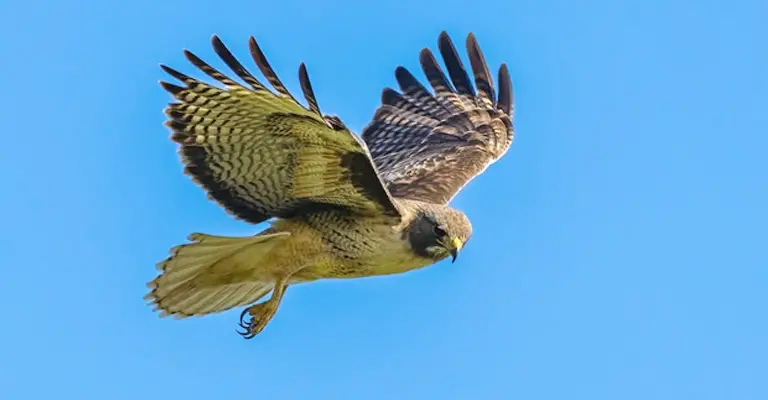
How Long Do Hawks Live?
The lifespan of hawks can vary significantly depending on several factors, including the species, habitat, diet, and threats they face. On average, hawks have a lifespan ranging from 10 to 20 years in the wild. However, some species have been known to live considerably longer.
One of the factors influencing the lifespan of hawks is their size. Larger hawks generally have longer lifespans compared to their smaller counterparts. For instance, the Red-tailed Hawk, a common species in North America, typically lives for about 10 to 15 years.
On the other hand, the larger and more robust Ferruginous Hawk has been known to survive for up to 20 years or more. The habitat and availability of prey also play a crucial role in determining a hawk’s lifespan. Hawks require vast territories with diverse ecosystems to thrive.
What Is the Average Lifespan of Hawks in Captivity?
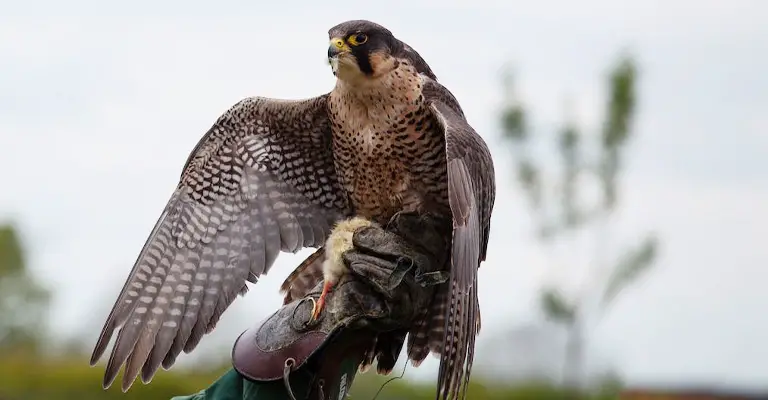
In captivity, hawks generally have the potential to live longer lives compared to their wild counterparts. Proper nutrition, veterinary care, and protection from predation can significantly increase their lifespan. In captivity, some hawks have been recorded to live well into their 30s or even beyond.
It’s important to note that the information on hawk lifespans is based on studies, observations, and banding data conducted by researchers and bird enthusiasts.
Gathering accurate data on wild bird populations can be challenging due to their wide-ranging behavior and the difficulty of tracking individuals throughout their entire lives. However, the available data gives us a general understanding of their lifespan dynamics.
The Life Cycle of Hawks
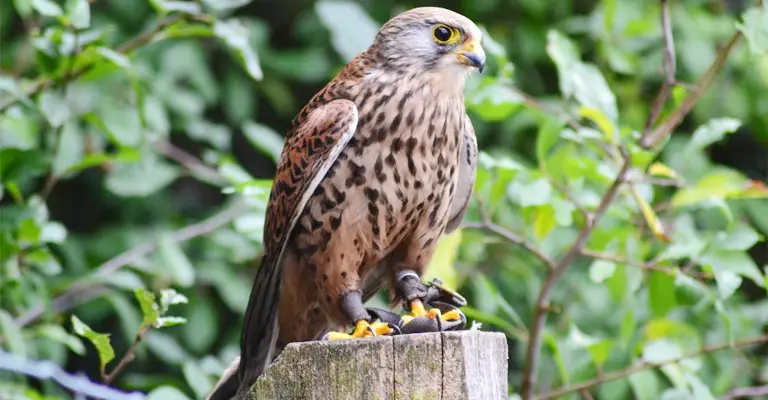
The life cycle of hawks encompasses various stages, from hatching to maturity and eventually reproduction. Let’s explore the typical life cycle of hawks:
Egg Stage
The life cycle begins with the female hawk laying eggs. Hawks typically construct nests in trees, on cliffs, or sometimes on man-made structures like buildings. The female hawk will lay one to five eggs, depending on the species.
The eggs are incubated by both parents, with the female taking the primary responsibility. Incubation usually lasts around 30 to 40 days, during which time the parents diligently protect and warm the eggs.
Hatchling Stage
Once the eggs hatch, the hatchlings, known as eyasses, emerge. Eyasses are blind and covered in down feathers. They are completely dependent on their parents for food, warmth, and protection.
The parents work together to provide a steady supply of food, which primarily consists of small mammals, birds, and reptiles. The eyasses grow rapidly during this stage.
Nestling Stage
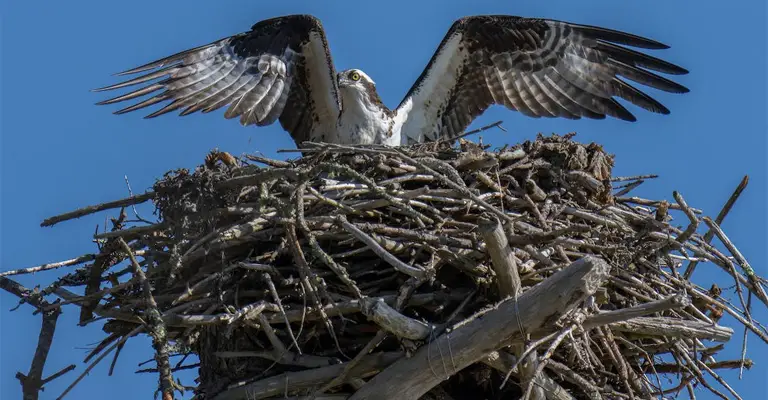
As the eyasses grow, they enter the nestling stage. Their downy feathers are gradually replaced with flight feathers, and their eyesight improves. At this stage, they become more active in the nest and may begin to exercise their wings in preparation for fledging.
Fledgling Stage
The fledgling stage is a critical phase in a hawk’s life cycle. It marks the period when the young hawks leave the nest, known as fledging. Fledglings are capable of limited flight and spend their time exploring their surroundings, honing their flying skills, and gradually gaining independence. The parents continue to provide food and guidance during this period.
Juvenile Stage
After leaving the nest, hawks enter the juvenile stage. They are no longer dependent on their parents for food, but they continue to refine their hunting abilities and survival skills.
Juvenile hawks may disperse and explore new territories, often venturing far from their birthplace. This period allows them to gain experience and establish their own territories.
Adult Stage
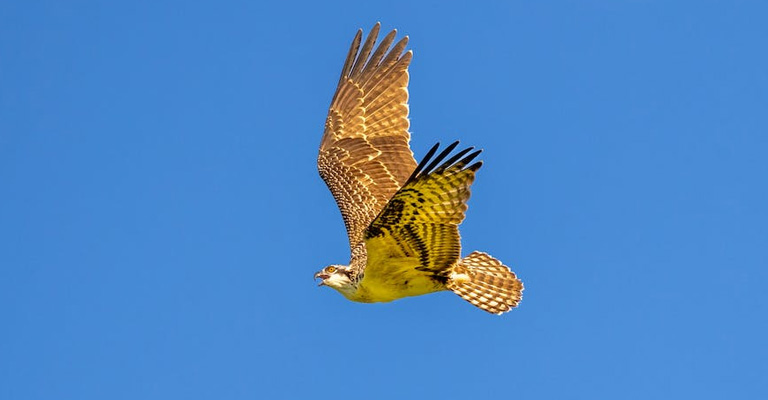
Hawks reach sexual maturity at around two to three years of age, depending on the species. Once they reach adulthood, they are ready to breed and reproduce.
Adult hawks establish territories, find mates, and engage in courtship displays. They build nests and raise their own broods, continuing the life cycle.
Reproduction Stage
Adult hawks engage in courtship rituals, which involve aerial displays, vocalizations, and various behavioral cues. Once a pair forms a bond, they engage in mating, and the female lays a new clutch of eggs. The cycle continues as the eggs are incubated, hatch into eyasses, and the process repeats itself.
How Do Most Hawks Die?
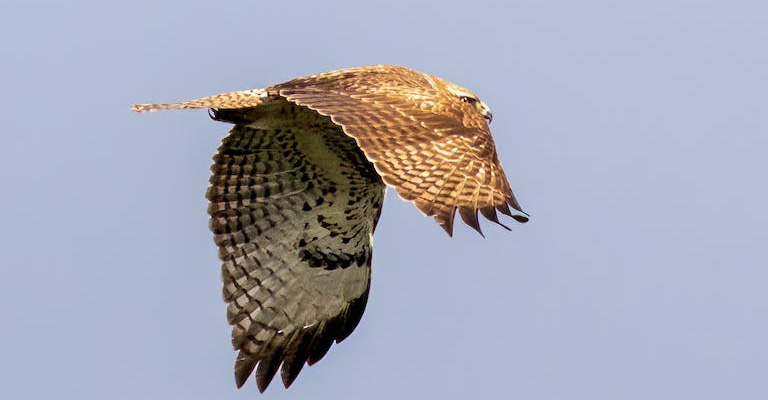
The life of a hawk is filled with challenges and potential threats, and there are several ways in which most hawks may die. Here are some common factors that contribute to hawk mortality:
Predation
Hawks themselves are predators, but they can fall victim to predation by larger birds of prey, such as eagles or owls. These predators may compete for territory or prey resources, leading to conflicts resulting in injury or death for the hawks.
Human Activities
Human interference and activities can pose significant risks to hawks. Habitat destruction, such as deforestation or urbanization, reduces suitable nesting and foraging habitats, forcing hawks to seek alternative locations that may be less suitable or increase their exposure to other dangers.
Environmental Changes and Natural Disasters
Hawks are susceptible to environmental changes and natural disasters. Severe weather events, such as hurricanes, storms, or prolonged periods of extreme heat or cold, can impact their ability to find food or shelter, leading to starvation or exposure. Climate change and habitat loss further exacerbate these risks.
Disease and Illness
Hawks are not immune to diseases and illnesses. They can be affected by viral, bacterial, or fungal infections, parasites, or other health conditions. These can weaken the hawks’ immune systems, hinder their ability to hunt effectively, and eventually lead to death if left untreated.
Accidents and Injuries
Hawks are agile fliers, but accidents and injuries can occur. Collisions with objects like windows or fences, entanglement in nets or fishing lines, or encounters with harmful chemicals or pesticides can result in severe injuries or even fatalities.
Lack of Food and Starvation
Hawks rely on a steady supply of prey for their survival. Changes in prey availability due to habitat alteration, overhunting, or disturbances to natural ecosystems can lead to food scarcity.
If hawks cannot find enough food to sustain themselves, they may become weak, malnourished, and susceptible to disease or predation.
It’s important to note that while these factors contribute to hawk mortality, many hawks are resilient and adapt to their environments, successfully overcoming these challenges.
Conservation efforts focused on habitat protection, reducing human-induced threats, and promoting awareness about the importance of these birds can help mitigate the risks and ensure the survival of hawk populations for future generations to admire and appreciate.
How Old Is the Oldest Hawk?
The oldest known wild hawk was a Red-tailed Hawk named “Uncle Sam.” He was banded in 1985 and lived until 2016, making him an astonishing 31 years old.
This remarkable case highlights the potential for hawks to live longer lives, surpassing the average lifespan observed in the wild.
It’s worth noting that this exceptional individual’s longevity is not representative of the typical lifespan of hawks in the wild, but it demonstrates the potential for individual hawks to defy the odds and reach advanced ages.
What Are the Predators of Hawks?
While hawks are apex predators and occupy the top of the food chain in their ecosystems, they are not completely immune to predation themselves. Here are some of the predators that pose a threat to hawks:
Larger Birds of Prey
Hawks may face predation from larger raptors, such as eagles, owls, or other hawk species. These larger birds can compete for territory and resources, leading to conflicts that can result in injury or death for the hawks.
Mammalian Predators
Some mammalian predators can pose a threat to hawks, especially when hawks are vulnerable during nesting or roosting periods. Animals such as foxes, raccoons, coyotes, or even larger mammals like bobcats or mountain lions can prey on hawks if they have the opportunity.
Snakes
Certain species of snakes, particularly larger constrictors like pythons or large venomous snakes, can pose a threat to hawks. If a hawk encounters a snake on the ground or in a nest, the snake may defend itself by striking and potentially injuring or killing the hawk.
Other Predatory Birds
In some cases, other predatory birds such as falcons, accipiters, or even smaller raptors may attack and prey upon hawks. These interactions can occur when hawks intrude upon the territories of other bird species or during conflicts over resources.
Humans
While not natural predators, humans can pose a threat to hawks through various activities. Habitat destruction, pollution, illegal hunting, and collisions with vehicles or structures caused by human actions can result in injury or death for hawks.
It’s worth noting that hawks have evolved strategies to defend themselves and avoid predation. Their agility, speed, and keen eyesight aid in detecting and evading potential threats.
FAQs
Yes, some hawk species have been known to live longer than 20 years. For example, the Ferruginous Hawk has been recorded to survive for 20 years or more. In captivity, where they receive proper care, hawks have been known to live well into their 30s or even beyond.
Several factors can contribute to a shorter lifespan for hawks. These include predation by larger birds or mammals, human activities such as habitat destruction and illegal hunting, collisions with vehicles or structures, and limited availability of prey.
Generally, there is no significant difference in the lifespans of male and female hawks. Both sexes have similar lifespans within a particular species.
Determining the exact age of a wild hawk can be challenging. Scientists often rely on banding programs where birds are captured, banded with a unique identification tag, and released. By tracking the banded birds over time, researchers can estimate their ages based on the date of banding and subsequent recaptures or observations.
The oldest recorded hawk in captivity was a Northern Goshawk named “Sunny” that lived for 47 years. Captive hawks generally have the potential to live longer lives compared to their wild counterparts due to factors such as consistent food supply, veterinary care, and protection from predators.
Final Words
So, now you know how long hawks live. Hawks, like many birds of prey, have lifespans that can range from 10 to 20 years in the wild, with larger species generally living longer.
However, various factors such as habitat, prey availability, predation, and human interference can impact their longevity. While some hawks may live relatively short lives due to these challenges, there are remarkable instances of individuals defying the odds and reaching advanced ages.
Studying and understanding the lifespan of hawks not only sheds light on their biology but also emphasizes the importance of conservation efforts to ensure their survival for future generations to admire and cherish.